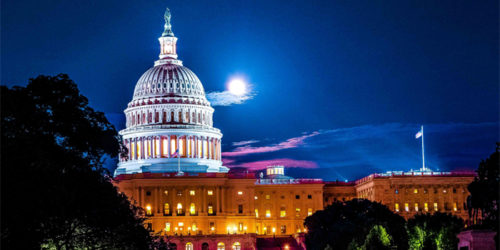AWWEE Hosts Event Discussing the Bipartisan Infrastructure Law and its Funding Opportunities
May 24, 2022
Downey Brand Infrastructure Publication
On May 12, 2022, the Association of Women in Water, Energy, and Environment (AWWEE) hosted an online event entitled “The Bipartisan Infrastructure Law: Investments in Water, Energy, and Environment.” During the hour-long event, Emily Brock, Director of the Government Finance Officers Association’s Federal Liaison Center, and Beth Hughes-Brown, Assistant Director of the Reclamation Program and Budget Office for the Bureau of Reclamation, broke down the $1.2 trillion ($550 billion in new money) Infrastructure Investment and Jobs Act, also known as the Bipartisan Infrastructure Law (BIL), that President Biden signed in November 2021 (see this Downey Brand alert regarding the BIL’s key provisions, this alert regarding the NEPA streamlining provisions authorized under the BIL for key environmental and infrastructure projects, and this post regarding a new NEPA rule that restored certain environmental review practices for major federal projects, including projects authorized in the BIL).
Overview of the Bipartisan Infrastructure Law
Emily Brock discussed the BIL overall and emphasized it is “not just bricks and sticks”:
- Funds will be distributed to roads, bridges, and railways, as well as to power grids, broadband, resiliency and climate impacts, public transit and airports, and drinking water;
- Those funds are to be distributed over a 5-year period;
- The White House’s lengthy BIL guidebook is a very helpful resource; and
- Recurring key BIL concepts include equity, sustainability, and partnering, both with state and private partners.
Ms. Brock then discussed the various programs under the BIL, including:
- Broadband programs, which are especially important for rural applicants, particularly due to the COVID-19 pandemic;
- A 3-in-1 multi-modal discretionary project grant for roads in which one application makes the applicant eligible for three different large grants; and
- Various water programs, which include a focus of ensuring eligibility is not a hurdle.
Finally, key procurement considerations were examined:
- Build American, Buy American, an Act included in the BIL which guarantees that funds for a Federal financial assistance program for infrastructure may only be obligated for a project in which certain materials are produced in the U.S.; and
- Justice 40, a whole-of-government effort that ensures Federal agencies work with states and local communities in an effort to meet President Biden’s promise to deliver at least 40 percent of the benefits from Federal investments in climate and clean energy to disadvantaged communities.
Water and the Bipartisan Infrastructure Law
Beth Hughes-Brown focused on issues related to water and spoke of the extreme drought in the West and what the BIL will enable across that region, including:
- Faster project completions and delivering water sooner;
- Improved drought resistance and water reliability;
- Redressing the impacts of climate change on western watersheds;
- Rehabilitating aging infrastructure; and
- Completing Indian Water Rights settlements.
Ms. Hughes-Brown also broke down the BIL’s funding to the Bureau of Reclamation:
- Funds will be allocated to both ongoing programs and new programs, some of which were developed due to the BIL;
- Programs that can spend the money swiftly will receive the funding, as opposed to splitting up the funding by percentage to each program;
- The Bureau of Reclamation’s $8.3 billion in BIL funding ($1.7 billion per year for 5 years) will be used towards WaterSMART grants, watershed health, desalination, rural water projects, and a variety of other types of work; and
- Projects selected from 2010 through 2021 through WaterSMART and other Bureau of Reclamation programs are expected to make possible a water conservation capacity of over 1.5 million acre-feet, which equates to roughly 490 billion gallons of water (for perspective, one acre-foot serves a family of four for a year).
Ms. Brock and Ms. Hughes-Brown ended their presentation advising applicants to go straight to the source and examine the law and the White House guidebook, as while those documents may be lengthy and complicated, they hold important information, including descriptions of potential funding opportunities. The presenters also advised applicants to locate past approved grants as guides for applications and they stressed the importance of applicants telling their stories, encouraging them to describe their work and why they are doing it. They ended by concluding that the funding opportunities under the BIL are great and some even include principal forgiveness loans. The BIL can open doors for funding for rural and small communities and overall allows for increased funding opportunities than seen previously.

